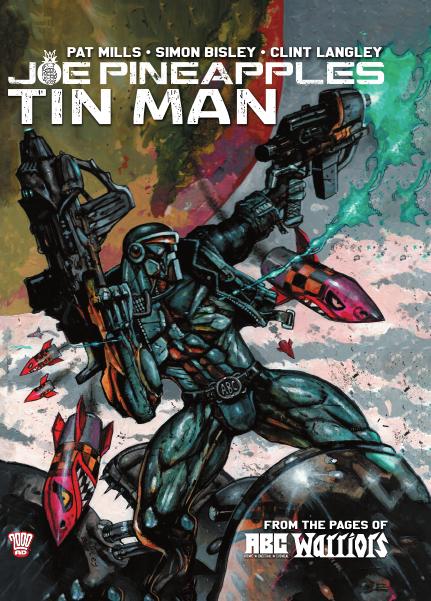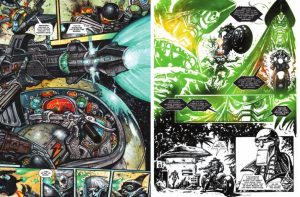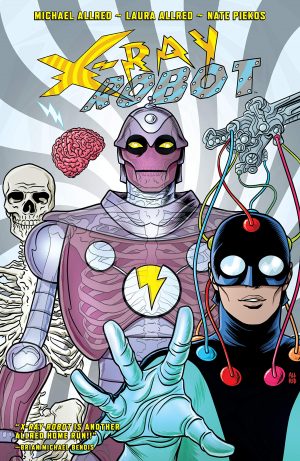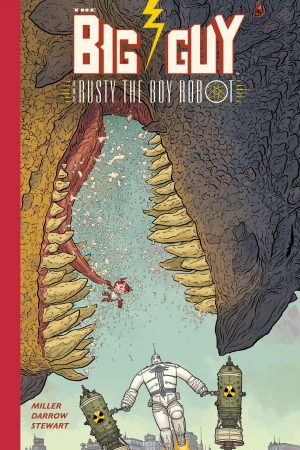Review by Frank Plowright
Tin Man opens with robot sniper Joe Pineapples and sewer droid Ro-Jaws marooned on an asteroid, just as they have been for millions of years. As if to emphasise just how long robots survive, Pat Mills then has them trapped for another five thousand years. Joe’s erased some of his memory circuits, so he can only speculate as to why they’re there, and doesn’t know why he might have brought Ro-Jaws along.
This is billed as the final Joe Pineapples story, so among other items, Pat Mills finally reveals the meaning of the strange name he came up with years back. The truth is probably that he just thought it sounded cool, which it does. We also learn that Ro-Jaws has the programmed voice of Bob Hoskins, which doesn’t appeal to Joe. It could be worse. It could be Ray Winstone. Joe sounds like Robert Mitchum, by the way, and for fans of the ABC Warriors, Mills also runs through the voices of the remainder.
If it’s great seeing Joe again after a long absence, there’s going to be rejoicing at Simon Bisley returning to one of the characters he defined when starting out. Now it’s fully painted Bisley art, for anything else would be foolish, and the sheer energy of his work remains. He produces amazing character portraits of the ABC Warriors, and other action scenes are the excess you’d expect from Bisley. Bisley only draws half the story, though, and Tin Man is completed by Clint Langley, who’s had even more experience with Joe as a character. Rather than attempt to imitate Bisley, Langley reverts to black and white with colour overlays, providing separately distinctive pages.
Beneath a trivial veneer this is a smart story, as the central point of Tin Man becomes whether or not robots have souls. It’s an obsession for the evil Blackblood, and a point of contention between Joe and his former partner, and as he mulls over philosophical matters we see the continuing contrasting violence of his existence. There are circular aspects to his conversations with Ro-Jaws, but Mills eventually clarifies the past and gives Joe a moment of insight. Veering from base comedy through brutality and manipulation to existential angst is quite the journey, and Mills pulls it off satisfyingly.
The volume closes with ‘His Greatest Hits’ not seen since 1996. That’s but the blink of an eye compared to the last time anyone visited the planet where Joe stores his arsenal. He needs the exact weapon for an assassination, and while Mills supplies a viable script, any weight is drained by Tom Carney’s poor art. It’s a fusion of Brendan McCarthy and Jamie Hewlett, but nowhere as good as either, supplying energy without technique. Don’t worry about it, the lead story’s enough.





